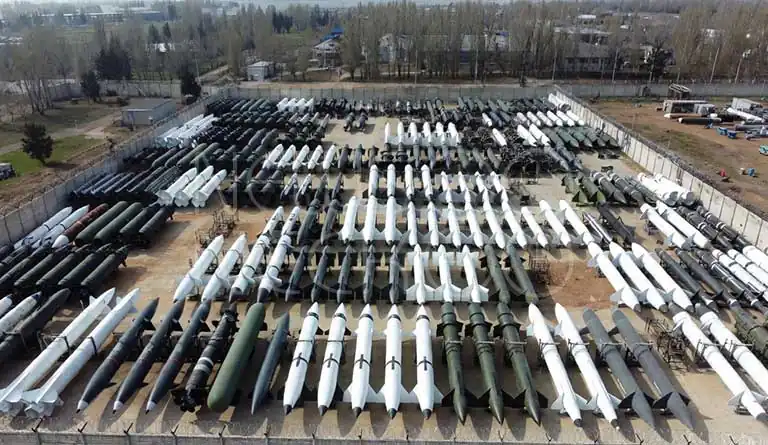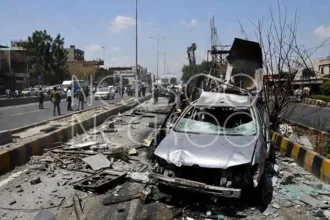China’s Missile Boom: A New Global Arms Race Begins
CNN Reported: From quiet stretches of farmland to sprawling new industrial zones, China’s landscape is changing in ways the world can no longer ignore.
What once were villages and open fields have turned into enormous construction sites filled with towers, bunkers, and vast factory halls all linked to one thing: missiles.
According to a new CNN analysis based on satellite imagery, government documents, and industrial records, China has launched a massive expansion of missile production sites since 2020. Experts say this transformation is not just about military growth it’s the beginning of a new global arms race.
A Silent Transformation Beneath the Sky
High above China’s vast terrain, satellites have been quietly recording a breathtaking change. Out of 136 facilities tied to missile development or the Chinese military’s Rocket Force, more than 60% have expanded in the past five years.
Together, these sites now cover over 21 million square feet of new construction an area roughly the size of 400 football fields. New towers rise where small homes once stood. Bunkers appear carved into hillsides. Long, thin buildings stretch across previously untouched plains.
In several cases, analysts say, even missile parts can be seen in satellite photos.
“This is China positioning itself as a global superpower,” said William Alberque, senior adjunct fellow at the Pacific Forum and a former NATO arms control official. “We are witnessing the early stages of a new arms race. China is not just running it’s sprinting.”
From Villages to Weapons Hubs
Many of the facilities identified in the CNN analysis have grown so quickly that they’ve replaced entire villages and stretches of farmland. Where farmers once planted rice and wheat, long concrete buildings now stretch for hundreds of meters.
One site in particular, located deep in China’s northern region, doubled in size between 2020 and 2024. Satellite images show freshly built research centers, vehicle testing areas, and what appear to be missile silos under construction.
These facilities are managed by subsidiaries of China’s two main state-owned defense contractors organizations that feed into every branch of the People’s Liberation Army (PLA).
Cross-referencing maps, corporate records, and satellite visuals, analysts have identified over a dozen previously unreported missile-related sites, each playing a role in producing or testing weapons for China’s expanding military.
You Might Like it: Trump & Xi in Final Push to Save U.S. China Trade Truce
Xi Jinping’s Military Vision
To understand the scope of this expansion, one must look to the very top to President Xi Jinping, who has reshaped China’s defense policy since coming to power in 2012.
Xi has described his vision of the PLA as a “world-class” military, capable of competing — and winning — against any global rival. Billions of dollars have been poured into research, weapon development, and modern training programs.
Central to this plan is the PLA Rocket Force (PLARF) — the elite branch responsible for China’s nuclear and ballistic missiles. Xi has called it the “core of strategic deterrence” — a vital shield that protects China’s global interests and signals its growing power.
“The Rocket Force is China’s message to the world,” said Alberque. “It tells us that Beijing is no longer satisfied with regional dominance. It wants a seat at the global security table- and the means to stay there.”
The U.S. Struggles to Keep Pace
While China’s missile network grows at record speed, the United States faces its own challenges. Supply bottlenecks, aging production lines, and competing defense priorities have slowed the U.S. military’s ability to restock and innovate.
The contrast is striking: as China breaks ground on new missile research centers almost every month, the U.S. is struggling to produce enough ammunition and modern equipment to meet its own needs- let alone those of its allies.
This widening gap raises urgent questions for Washington. If China’s missile capacity continues to grow unchecked, could it soon gain a technological or numerical advantage?
Must Read: Modern Warfare: The Hidden Business Behind Global Conflicts
The Strategic Message Behind the Missiles
China’s recent moves are not just about stockpiling weapons they are about sending a signal. Each new facility, each newly poured foundation, reinforces China’s image as a nation ready to protect its interests far beyond its borders.
Experts believe this expansion could serve multiple purposes.
First, it strengthens China’s ability to deter the United States and its allies from intervening in conflicts near Chinese territory, such as Taiwan or the South China Sea.
Second, it gives Beijing more leverage in global diplomacy. “Missiles are political tools as much as military ones,” said a European security analyst. “The more powerful China’s arsenal becomes, the louder its voice in global negotiations.”
And finally, the expansion could serve as a domestic symbol of pride — proof to the Chinese people that their country is achieving military greatness on par with the West.
A Race Without Rules
What makes this new arms race especially concerning is its speed and secrecy. Unlike the U.S.-Soviet missile competition during the Cold War, today’s race unfolds with little transparency or dialogue.
China’s defense contractors rarely release public data about their operations, and international observers have limited access to the facilities themselves. This opacity fuels uncertainty — and risk.
“If you can’t see what your rival is building, you can’t judge their intentions,” said Alberque. “That’s how misunderstandings start. And misunderstandings in the nuclear age are dangerous.”
Already, U.S. intelligence agencies have raised alarms about China’s growing stockpile of nuclear warheads, estimated to reach 1,500 by 2035 — roughly triple its current number.
The Human Side of Expansion
Lost in the numbers and geopolitics are the ordinary people whose lives are being reshaped by this transformation.
In several regions, small farming communities have been relocated to make room for new military-industrial complexes. Roads once used by villagers now lead to restricted zones. Satellite photos show entire neighborhoods disappearing, replaced by vast, fenced-off compounds.
For many locals, the change has been sudden and confusing. “It was farmland for generations,” said one villager, who spoke anonymously to a local journalist. “Now, no one can even go near it.”
A Future Written in Steel and Concrete
As bulldozers continue to carve new paths through the Chinese countryside, the scale of this effort becomes clearer. The country is not just expanding its military — it’s rewriting the balance of power one construction site at a time.
Experts warn that this rapid militarization could spark a global ripple effect. Nations in Asia, Europe, and North America may respond by boosting their own weapons production, creating a dangerous spiral of escalation.
“This is not just about China and the U.S.,” Alberque said. “It’s about what happens when other countries see this buildup and decide they need to match it. That’s how arms races begin and they rarely end well.”
The New Reality
The evidence from space paints a clear picture: China’s ambitions are as vast as the construction sites rising across its provinces.
While the world debates diplomacy, Beijing is building power- brick by brick, missile by missile.
And somewhere, beneath the clouds and cranes, a new chapter in global security is being written one that could define the next century.
Author: Yasir Khan
Date: 07 Nov, 2025
For More Updates, Visit Newsneck













